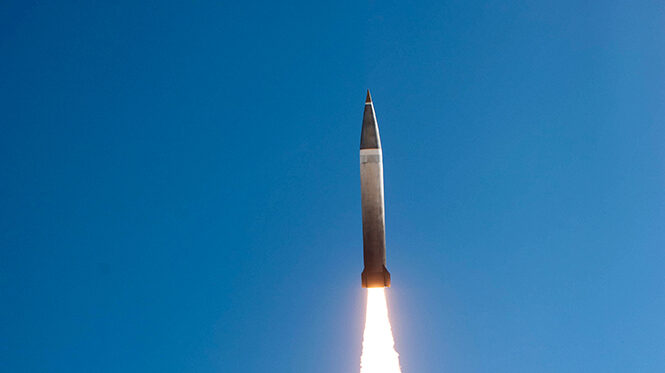 WASHINGTON — The US Army’s quest to provide soldiers with its new Precision Strike Missile (PrSM) has taken another step forward with the service announcing it has begun accepting weapon deliveries.
WASHINGTON — The US Army’s quest to provide soldiers with its new Precision Strike Missile (PrSM) has taken another step forward with the service announcing it has begun accepting weapon deliveries.
“The delivery of Precision Strike Missile Increment 1 early operational capability missiles follows successful production qualification testing in November at White Sands Missile Range, New Mexico,” the Army wrote in a short announcement today. The service previously said it was awaiting a final test report before accepting those initial missiles, a document that presumably verified the Lockheed Martin-developed long-range weapon is ready for prime time.
PrSM Inc 1 is designed to be fired from the M142 High Mobility Artillery Rocket System (HIMARS) and the M270A2 Multiple Launch Rocket System (MLRS). The new missile was designed to strike targets 500 km away — a distance greater than the legacy Army Tactical Missile System’s (ATACMS) 70-300 km range they are set to replace — but the service hasn’t disclosed if it will in fact hit that range.
The Army, however, has said publicly that it has tested it against targets more than 400 km away, and at a much shorter distance too.
Following that November qualification test, for example, Lockheed did not disclose the exact distance the missile flew to hit the target, but that it was the “shortest range flown” to date at less than 85 kilometers thus “demonstrating the system’s continued accuracy from launch to impact.”
“While not PrSM’s primary mission range, the short-range flight represents the most stressful, dynamic environment for the missile as it maneuvers at hypersonic speeds to align to the target,” Lockheed said at the time. “This test verifies structural integrity of the missile and trajectory control.”
Regardless of just how far that first iteration missile can fly, US Army Pacific commander Gen. Charles Flynn told reporters last month he can’t wait to have the “crucial capability” in his arsenal and to provide soldiers in the region with the new capability.
As the Army prepares for PrSM Inc 1 fielding, it is also working on enhanced versions of the weapon, including an Increment 2 with a multimode seeker, known as the Land-Based Anti-Ship Missile (LBASM) seeker, and a PrSM Inc 3 which would seek to add in enhanced lethality payloads.
The service also tapped a Lockheed team and a Raytheon Technologies-Northrop Grumman team this year to work on competing PrSM Inc 4 designs that can fly more than 1,000 km, possibly double the range of the current version.






















